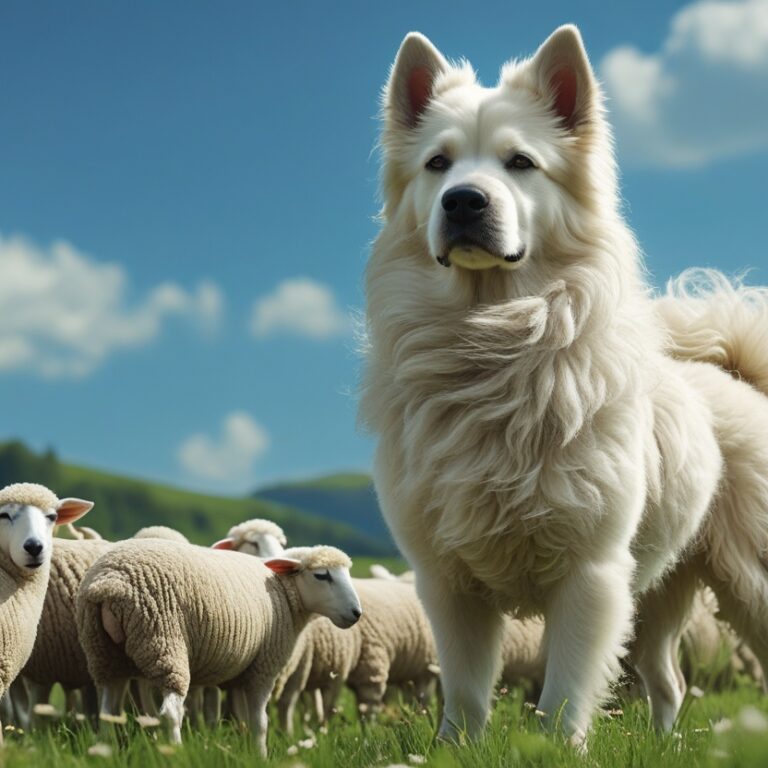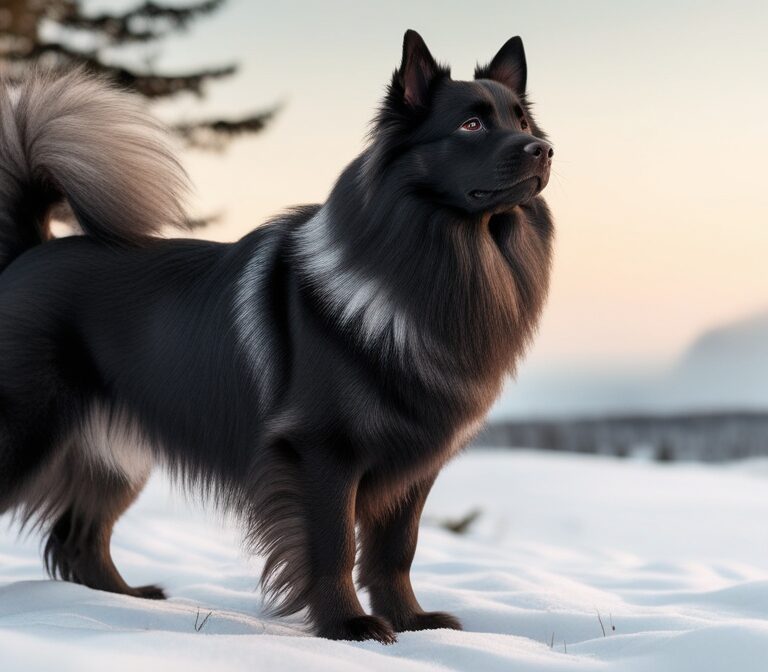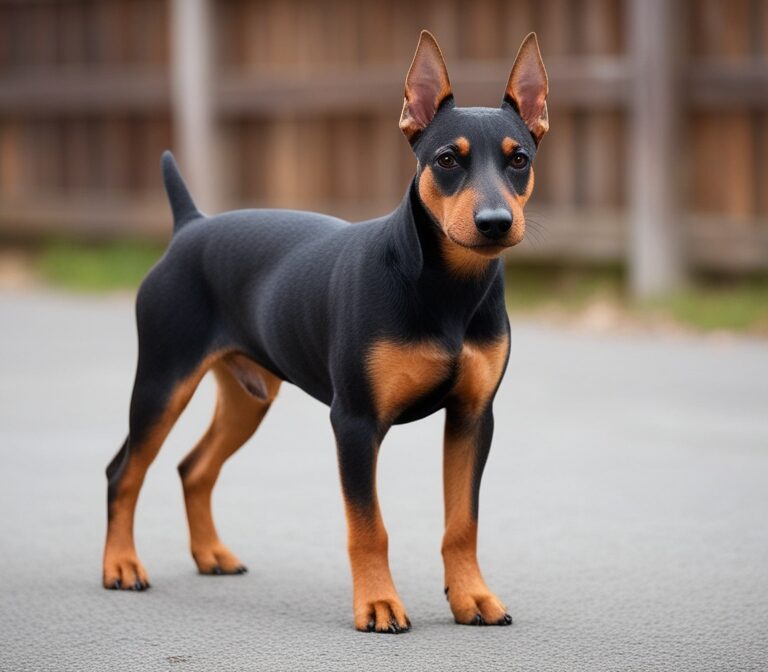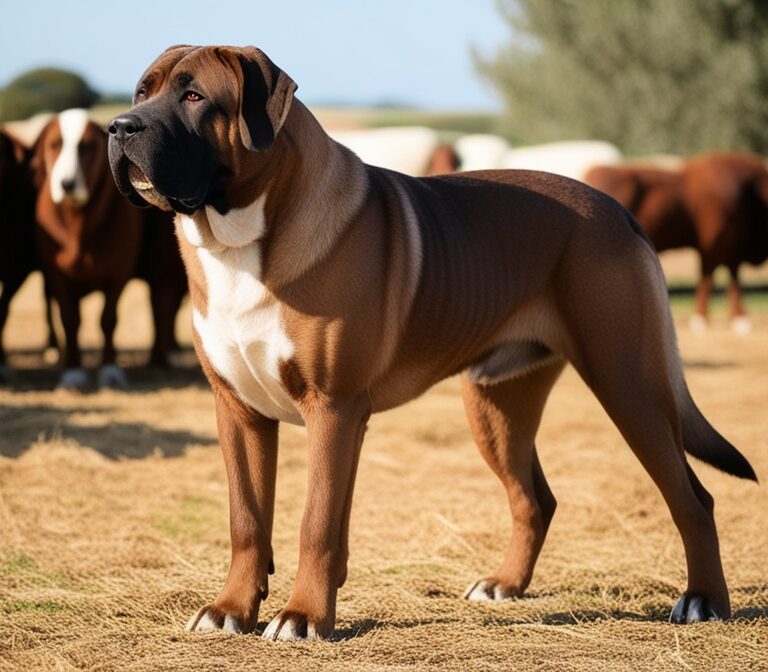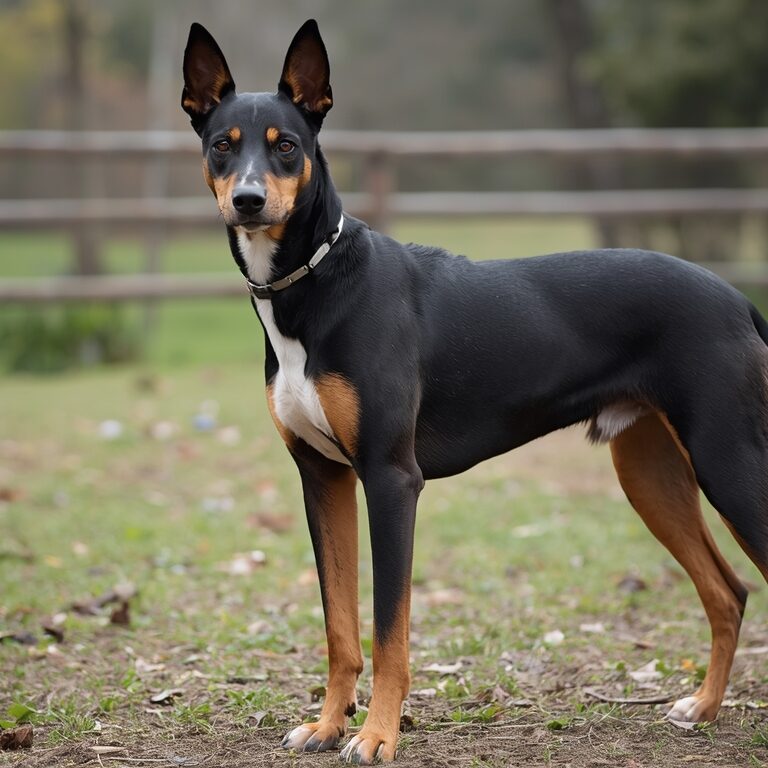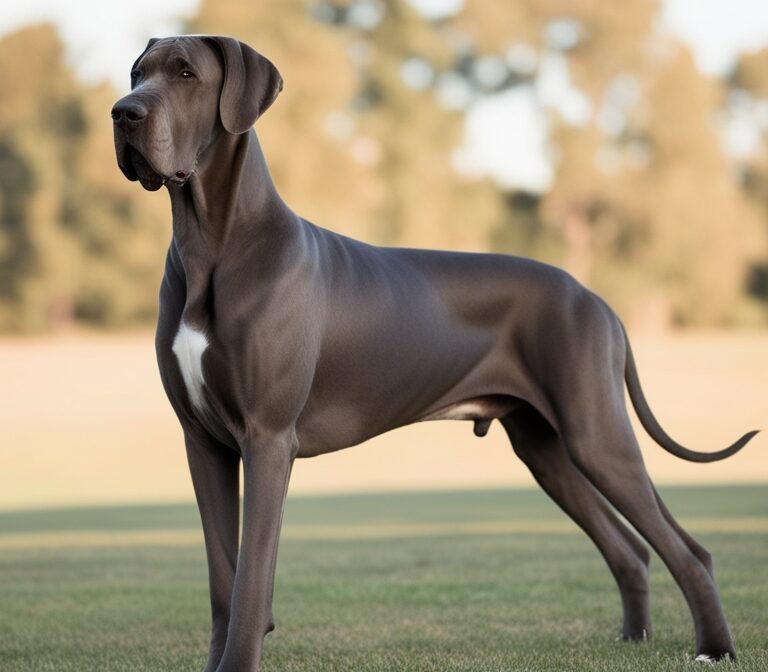Kuvasz Dog: The Noble Guardian Breed

Introduction to the Kuvasz Dog
The Kuvasz dog is a majestic livestock guardian breed that originates from Hungary, where it has served as a protector of flocks and a loyal companion to humans for centuries. Known for its strength, intelligence, and independence, the Kuvasz has earned a reputation as both a working dog and a dignified family protector. The breed’s large size, ranging between 48–62 kg for males and 37–50 kg for females, combined with its thick white double coat, makes it well-suited for outdoor life and resilient in harsh climates. Historically, the Kuvasz was entrusted with guarding sheep and cattle from predators such as wolves and bears, reflecting its natural instincts for vigilance and bravery. Today, while still respected for its working ability, the Kuvasz is also valued as a loyal household guardian for families who understand its unique temperament and needs. Its blend of nobility, patience, and protective instincts makes it one of the most distinctive guardian breeds in the world.
Historical Origins of the Kuvasz
The history of the Kuvasz dog can be traced back over a thousand years to the Magyar tribes who settled in the Carpathian Basin. These nomadic people brought with them strong, resilient dogs that were bred to guard their livestock during long migrations and protect families from predators and thieves. In medieval Hungary, the Kuvasz gained prestige as a royal guard dog, often seen in the courts of Hungarian kings. King Matthias Corvinus of Hungary, who ruled in the 15th century, was particularly known for his admiration of the Kuvasz and kept them not only for protection but also as symbols of loyalty and nobility. During this time, the breed also became associated with landowners and nobility, entrusted with safeguarding estates and livestock. Over the centuries, the Kuvasz remained central to Hungarian rural life, and its role as a working guardian dog helped preserve the breed’s distinctive traits of independence, strength, and courage.
Physical Appearance and Characteristics
The Kuvasz dog is an imposing and beautiful breed, recognized for its large frame, muscular build, and thick double coat. Males typically stand between 71–76 cm at the shoulder, while females measure slightly smaller, averaging 66–70 cm. Their coats are always white, a characteristic that was deliberately selected by shepherds to distinguish the dogs from predators during nighttime guarding. The outer coat is coarse and wavy, providing weather resistance, while the undercoat is dense, offering insulation against cold winters. The breed’s dark almond-shaped eyes convey intelligence and alertness, and their strong jaws and powerful frame underline their protective ability. Despite their size, Kuvasz dogs are agile and capable of covering large distances with ease, making them ideal for patrolling open fields and mountainous terrain. Their appearance reflects both elegance and strength, with every aspect of their physique designed to support their historical role as guardians and companions in demanding environments.
Temperament and Personality Traits
The temperament of the Kuvasz sets it apart from many other dog breeds. Known for being protective, intelligent, loyal, and patient, the Kuvasz is deeply devoted to its family but often wary of strangers. This cautious nature makes it an exceptional guardian, but it also means that socialization from a young age is essential to prevent excessive suspicion or aggression. Kuvasz dogs are independent thinkers, a trait inherited from centuries of working without constant human direction while guarding livestock. While loyal and affectionate toward their family members, they are not overly demonstrative and prefer to show their devotion through their protective presence rather than constant attention-seeking. Patience and dignity are also defining characteristics; they are known to be gentle with children when properly trained and socialized, but their protective instincts will always keep them alert to potential threats. This combination of loyalty, independence, and intelligence makes them unique companions for experienced owners.
Role as a Livestock Guardian
The Kuvasz dog’s role as a livestock guardian is one of the oldest and most respected aspects of its history. Bred to protect sheep, cattle, and other animals from wolves, bears, and human threats, the Kuvasz developed instincts that allow it to work independently and make decisions without relying on human commands. Unlike herding dogs that move flocks, Kuvasz dogs function as protectors, patrolling the perimeter and positioning themselves strategically to ward off danger. Their size and strength serve as a deterrent to predators, while their courage ensures that they will stand their ground if challenged. Even today, Kuvasz dogs are used on farms and ranches in Hungary and other parts of the world to protect livestock in rural areas. Their ability to bond with the animals they guard is remarkable; they adopt a watchful, almost parental role, ensuring the safety of their charges with unwavering dedication and vigilance.
Training and Socialization Needs
Training a Kuvasz dog requires patience, consistency, and a firm yet respectful approach. Due to their intelligence and independence, Kuvasz dogs are not blindly obedient and will often assess whether a command makes sense before following it. This trait can be challenging for inexperienced owners but is a reflection of their centuries-old role as decision-makers in the field. Early socialization is critical to ensuring that the Kuvasz develops into a well-balanced adult. Exposure to different environments, people, and animals during puppyhood helps curb excessive wariness and prevents potential behavioral problems. Positive reinforcement works best with this breed, as harsh methods may damage their trust and reduce their willingness to cooperate. Leadership is essential; a Kuvasz respects confident, consistent guidance and will thrive in environments where boundaries are clear. When properly trained and socialized, the Kuvasz becomes a trustworthy, composed, and courageous companion, balancing independence with loyalty to its family.
Health and Lifespan of the Kuvasz
The health of the Kuvasz dog is generally robust, but like many large breeds, it is prone to certain conditions that owners must monitor carefully. The average lifespan ranges between 10 to 12 years, which is typical for dogs of its size. Common health issues include hip dysplasia, a hereditary condition that affects the joints, as well as elbow dysplasia and osteochondritis dissecans (OCD), which impact mobility. Bloat, or gastric torsion, is another concern for deep-chested breeds like the Kuvasz and can be life-threatening if not addressed promptly. Responsible breeders take health screenings seriously, testing for genetic conditions before breeding pairs. Routine veterinary care, proper nutrition, and weight management are essential for maintaining a Kuvasz’s health. Regular exercise also plays a significant role in keeping joints strong and maintaining muscle mass. With attentive care and early detection of potential health problems, Kuvasz dogs can enjoy long, fulfilling lives while continuing to serve as loyal guardians and companions.
Grooming Requirements of the Kuvasz
The grooming needs of the Kuvasz dog are moderate despite its impressive double coat. Their white fur is naturally dirt-resistant, which means they rarely need frequent bathing unless they have rolled in mud or developed an odor. However, regular brushing is essential to prevent mats and tangles, especially in the dense undercoat. Weekly brushing sessions help remove loose fur and maintain the coat’s health, while during shedding seasons in spring and fall, more frequent grooming is necessary. Trimming is rarely needed, but regular checks of the ears, teeth, and nails are crucial for overall hygiene. Owners should also monitor for parasites, particularly if the Kuvasz spends significant time outdoors protecting livestock or patrolling yards. Grooming sessions not only maintain the dog’s appearance but also provide an opportunity to bond with the animal and check for any skin issues or injuries. Proper grooming ensures that the Kuvasz remains both comfortable and elegant throughout the year.
Exercise and Activity Levels
The Kuvasz dog is an active breed that requires substantial exercise to maintain both physical health and mental well-being. As a working dog, it is accustomed to roaming large areas and staying alert for extended periods. Daily exercise, including long walks, free play in a secure yard, or farm work, is essential to keep them satisfied. Without sufficient activity, the Kuvasz may become bored, which can lead to destructive behavior or restlessness. While they enjoy open spaces, it is important to remember that their protective instincts may trigger them to patrol and guard, so secure fencing is necessary in residential environments. Mental stimulation, such as training exercises, scent games, or structured tasks, is equally important given their intelligence and independence. Owners who lead active lifestyles, have large properties, or maintain farms are best suited to meet the Kuvasz’s exercise requirements, ensuring that the breed thrives in both body and spirit.
Diet and Nutritional Needs
The diet of the Kuvasz dog must support its large size, active lifestyle, and thick coat. A balanced diet with high-quality protein sources is vital for maintaining strong muscles and energy levels. Large-breed dog formulas are often recommended, as they contain appropriate levels of calcium and phosphorus to support bone and joint health. Feeding should be divided into two or three smaller meals each day to reduce the risk of bloat, a condition to which Kuvasz dogs are prone. Fresh water must always be available, especially during warmer months, as their dense coats can make them prone to overheating. Supplements such as glucosamine and omega-3 fatty acids may benefit joint health and coat condition. Owners should avoid overfeeding, as excess weight puts additional strain on joints and increases the risk of health complications. Careful meal planning tailored to age, weight, and activity levels ensures that Kuvasz dogs remain strong, healthy, and full of vitality.
Kuvasz in Family Life
The Kuvasz dog in a family setting is both a devoted protector and a dignified companion. While their roots are in livestock guarding, they transfer their protective instincts seamlessly to their human families. They are loyal and affectionate, often forming deep bonds with their primary caregivers, and they tend to be particularly gentle with children when properly trained and socialized. However, their protective nature means they are always alert and may view unfamiliar people or animals with suspicion. Families considering a Kuvasz must ensure they have the time, space, and commitment required to raise and manage such a large, independent breed. Their need for leadership and boundaries makes them best suited for experienced dog owners. In the right environment, the Kuvasz offers unmatched loyalty and a sense of security, becoming a cherished member of the household while maintaining the noble dignity that defines the breed.
Interaction with Children and Other Pets
The interaction of the Kuvasz with children and other pets depends largely on its upbringing, training, and socialization. With children, the Kuvasz is known for its patience and gentle nature, but it also has a protective instinct that may cause it to intervene if play is perceived as rough or threatening. Early introductions and supervised interactions ensure that children understand how to respect the dog’s boundaries, fostering a safe and positive relationship. With other pets, the Kuvasz may display territorial or dominant behavior, particularly toward unfamiliar animals. However, when raised alongside other household pets, they can coexist peacefully and even develop protective bonds with them. Their strong guarding instincts extend naturally to animals under their care, making them excellent companions for livestock as well. Socialization during the puppy stage is critical to teaching a Kuvasz appropriate behavior, ensuring they grow into balanced adults who integrate smoothly into multi-pet households.
Training and Socialization of the Kuvasz
The training of the Kuvasz dog requires consistency, patience, and firm but gentle leadership. As an independent thinker bred to make decisions while guarding livestock, the Kuvasz is not a dog that thrives under harsh methods or repetitive drills. Instead, positive reinforcement techniques that reward good behavior with praise, treats, or playtime are most effective. Early socialization is crucial to introduce the Kuvasz to a variety of people, places, and experiences, reducing the risk of overprotectiveness or wariness around strangers. Puppy training classes are highly recommended, not only for obedience but also for controlled exposure to other dogs. Due to their strong guarding instincts, boundaries must be clearly established from the start, teaching them what situations warrant protection and which do not. Owners must show confidence and calm authority to earn a Kuvasz’s respect. With proper training and socialization, this breed becomes a reliable guardian that balances vigilance with affection.
The Kuvasz as a Working Dog
The Kuvasz dog as a working breed is deeply rooted in history, where it served primarily as a livestock guardian. Its role involved protecting flocks of sheep and goats from wolves, bears, and human threats, often working independently in harsh terrains. This heritage continues to influence the breed’s temperament and behavior today. The Kuvasz thrives when it has a job to perform, whether it be guarding property, protecting livestock, or simply patrolling the family home. Their intelligence allows them to assess situations quickly and act without waiting for human direction. While many Kuvasz dogs today are kept as companions, their instincts for protection and watchfulness remain strong. Owners with farms or large properties often find the breed invaluable, as it naturally assumes the role of a sentinel. Even in modern households, the Kuvasz maintains its working nature by alerting to intruders, ensuring safety, and providing unmatched loyalty.
Kuvasz and Urban Living
The Kuvasz in urban environments faces unique challenges compared to life in rural or farm settings. This large, independent dog thrives in open spaces where it can patrol and roam, so city living can be restrictive. However, with careful planning and sufficient daily exercise, some Kuvasz dogs adapt to suburban or urban homes. Secure fencing is mandatory, as their guarding instincts may lead them to patrol boundaries and react to strangers passing by. Noise and frequent interactions with unfamiliar people can overstimulate them, making proper socialization and training even more important in busy environments. Daily long walks, visits to open parks, and mental stimulation activities are essential to compensate for limited space. Owners must also be aware of neighborhood regulations, as the Kuvasz’s size and protective instincts may raise concerns among neighbors. While not the easiest breed for urban life, dedicated and experienced owners can successfully integrate a Kuvasz into city living.
Kuvasz Temperament and Personality
The temperament of the Kuvasz dog is a defining feature of the breed. Known for being protective, intelligent, loyal, and independent, the Kuvasz embodies the qualities of a true guardian. Their protective instinct is strong, often extending beyond family members to include property and other animals under their care. While their loyalty is unwavering, they are not overly affectionate lap dogs but rather dignified companions who demonstrate love through protection and presence. Their intelligence allows them to make independent decisions, which is why they require experienced owners who can establish authority without being harsh. Patience is another hallmark of their personality, particularly with children and those they consider part of their family. However, they can be aloof with strangers until trust is earned. This blend of loyalty, patience, and independence makes the Kuvasz a unique companion, admired by those who value strength of character and unwavering devotion.
Common Challenges in Owning a Kuvasz
Owning a Kuvasz dog presents unique challenges that potential owners must consider carefully. Their size alone requires ample space, making them unsuitable for small apartments or homes without secure yards. Their protective instincts, while valuable, can become problematic if not managed through training and socialization, leading to excessive barking or over-guarding. Independence, another hallmark of the breed, means they may not always obey commands if they believe their judgment is better suited to the situation. Grooming and exercise needs also require commitment, as neglect in these areas can lead to discomfort and behavioral issues. Additionally, their reserved nature with strangers can be misunderstood as aggression, particularly in urban settings. Prospective owners must evaluate their lifestyle, experience with strong-willed breeds, and ability to provide structure before welcoming a Kuvasz into their home. While challenges exist, dedicated and knowledgeable owners find the rewards of living with a Kuvasz immeasurable.
The Kuvasz as a Livestock Guardian Dog
The Kuvasz as a livestock guardian is one of its most celebrated roles, carried forward from centuries of tradition. Bred to protect flocks without constant human supervision, the Kuvasz demonstrates independence, bravery, and unwavering dedication to its charges. Unlike herding dogs that move livestock, the Kuvasz stands as a protector, using its size, strength, and intelligence to deter predators. Their white coats historically allowed shepherds to distinguish them from wolves in the fields, while their imposing presence alone often discouraged attacks. Farmers and ranchers still rely on the Kuvasz today in regions where predators pose a threat to sheep, goats, and other livestock. This natural guarding ability makes them invaluable for rural households. Even without livestock, the Kuvasz applies its protective instincts to family homes, standing watch with the same vigilance it would over a flock. The breed’s legacy as a guardian underscores its unmatched combination of courage and loyalty.
Kuvasz and Family Life
The Kuvasz dog in family settings can be a devoted and protective companion when raised in a loving and structured environment. Their natural loyalty and patience make them especially good with children, provided interactions are supervised to ensure respect from both sides. A Kuvasz often forms strong bonds with its family, treating them as its flock, and will act decisively to shield them from perceived threats. Unlike overly dependent breeds, the Kuvasz balances affection with independence, preferring to watch over family members rather than constantly seeking attention. Families who appreciate a dignified, watchful presence often find the Kuvasz an ideal match. However, because of its protective instincts, visitors and strangers may not be warmly received unless properly introduced. Households considering this breed must commit to early training and socialization, ensuring the dog learns to differentiate between true threats and harmless interactions. In return, families gain a steadfast guardian and loving companion.
Kuvasz and Other Pets
The Kuvasz dog with other animals can show a remarkable sense of responsibility and protection, especially when raised alongside them from an early age. Historically used as a livestock guardian, the Kuvasz treats sheep, goats, and other farm animals as part of its flock, ensuring their safety from predators. In household settings, this instinct may extend to cats and smaller dogs, provided introductions are handled carefully. While generally calm and watchful, the Kuvasz’s size and strength mean supervision is important during play with smaller pets. With other large dogs, particularly of the same sex, tensions can arise if both animals have strong guarding instincts. Owners must take a proactive approach to socialization and establish leadership to prevent dominance disputes. When boundaries are respected and introductions managed well, the Kuvasz can coexist peacefully with other pets, often assuming the role of protector and guardian within the multi-animal household.
Grooming and Coat Maintenance
The grooming needs of the Kuvasz dog revolve primarily around managing its thick, double-layered white coat. Designed to withstand harsh weather conditions, the coat provides excellent protection but requires regular maintenance to remain clean and healthy. Weekly brushing is essential to prevent mats and tangles, especially around the ears, chest, and hindquarters. During shedding seasons in spring and fall, more frequent brushing is needed to manage the heavy loss of undercoat. Unlike some breeds, the Kuvasz’s coat naturally resists dirt and odors, meaning baths are required only occasionally, unless the dog becomes particularly soiled. Owners should also pay attention to ear hygiene, nail trimming, and dental care as part of regular grooming routines. Because the Kuvasz is a large dog, grooming sessions can be time-intensive, but they provide an excellent opportunity to reinforce bonding and trust. With proper coat care, the Kuvasz maintains its majestic, clean appearance year-round.
Exercise Needs of the Kuvasz
The exercise requirements of the Kuvasz are shaped by its working background as a guardian of flocks. While not as hyperactive as some herding breeds, the Kuvasz requires daily physical and mental stimulation to remain balanced and content. Long walks, secure free-roaming in a large yard, and structured activities like obedience exercises or agility training provide the necessary outlets. At least one to two hours of exercise each day ensures the breed does not develop destructive habits out of boredom. Their protective nature means they enjoy patrolling property and observing their surroundings, activities that satisfy both their physical and instinctual needs. However, overexercising young Kuvasz puppies must be avoided, as their growing joints are susceptible to strain. Proper exercise tailored to their age and physical condition contributes to their overall health, reducing the risk of obesity and joint problems. Active owners and farm settings are particularly well-suited for fulfilling this breed’s energy needs.
Health Considerations for the Kuvasz
The health of the Kuvasz dog is generally robust, but as a large breed, it is predisposed to certain conditions that responsible owners must monitor. Hip dysplasia is a common concern, where improper alignment of the hip joint leads to discomfort and mobility issues. Elbow dysplasia, osteosarcoma, and progressive retinal atrophy are also conditions occasionally seen in the breed. Like many large, deep-chested dogs, the Kuvasz is at risk for gastric dilatation-volvulus, or bloat, a life-threatening condition requiring immediate veterinary intervention. Regular veterinary check-ups, appropriate nutrition, and controlled exercise during puppy growth stages significantly reduce health risks. Genetic screening by reputable breeders also plays a crucial role in minimizing inherited conditions. With proper care, the Kuvasz enjoys a lifespan of 10 to 12 years, a relatively long life for a dog of its size. Preventative healthcare and responsible breeding ensure this guardian remains strong and reliable throughout its life.
Nutrition and Diet of the Kuvasz
The diet of the Kuvasz dog must support its large size, active lifestyle, and strong immune system. High-quality commercial dog food or a well-formulated raw diet provides the protein, fats, vitamins, and minerals needed for optimal health. A protein content of around 22–26% and a fat content of 12–16% are generally recommended for adult Kuvasz dogs, though active working dogs may require slightly higher values. Puppies benefit from large-breed puppy formulas that support controlled growth, reducing the risk of skeletal issues like hip dysplasia. Meals should be divided into two to three portions daily, as a single large feeding can increase the risk of bloat. Owners should monitor body condition closely, as excess weight can strain joints and reduce longevity. Supplements such as glucosamine, chondroitin, and omega-3 fatty acids may also be beneficial for joint health and coat maintenance. Proper nutrition directly supports the Kuvasz’s health, energy, and longevity.
The Kuvasz as a Guard Dog
The Kuvasz dog as a guard is one of the most valued aspects of the breed, stemming from centuries of selective breeding to protect flocks and property. Unlike breeds trained specifically for attack, the Kuvasz relies more on intimidation, vigilance, and decisive action when needed. Their sheer size, deep bark, and unwavering confidence are often enough to deter intruders without confrontation. When a threat does present itself, the Kuvasz responds with calm authority, acting only when absolutely necessary to defend its family or territory. This measured response makes them reliable guardians rather than reckless defenders. Their ability to assess situations independently is a testament to their intelligence and strong instincts, though it also requires owners to maintain clear leadership to prevent overprotective behavior. For families and farms alike, the Kuvasz offers an unmatched sense of safety, blending dignity with formidable protective abilities that few breeds can rival.
The Kuvasz in History
The history of the Kuvasz dog stretches back hundreds of years, with its origins deeply tied to Hungary. Believed to have descended from ancient livestock guardian dogs brought into the Carpathian Basin by nomadic tribes, the Kuvasz became an indispensable protector of herds against predators such as wolves and bears. By the 15th century, the breed had gained prominence not only among shepherds but also within royal courts. King Matthias Corvinus of Hungary famously kept Kuvasz dogs, admiring their courage and loyalty. Over time, the breed’s reputation spread across Europe, where it was both revered for its guardianship and admired for its majestic appearance. World War II posed significant challenges, as many Kuvasz dogs were lost during the conflict, but dedicated breeders worked tirelessly to restore their population. Today, the Kuvasz remains a living link to Hungary’s pastoral traditions, carrying forward a legacy of strength, loyalty, and nobility.
Kuvasz Recognition by Kennel Clubs
The Kuvasz breed recognition highlights its respected status across the globe. The American Kennel Club (AKC) categorizes the Kuvasz in the Working Group, acknowledging its historical role as a livestock guardian and family protector. The United Kennel Club (UKC) also recognizes the breed under its Guardian Dog classification. Internationally, the Fédération Cynologique Internationale (FCI) lists the Kuvasz under Group 1, which includes sheepdogs and cattle dogs, specifically in Section 1 for livestock guardians. Each kennel club outlines detailed breed standards, focusing on aspects such as size, coat, temperament, and movement to preserve the integrity of the breed. These standards not only guide breeders but also serve as references for judges in dog shows. Recognition by these organizations ensures the Kuvasz remains preserved as a distinct and respected breed while promoting responsible breeding practices that prioritize health, temperament, and adherence to historical characteristics.
The Kuvasz in Modern Roles
The Kuvasz dog in contemporary society continues to embody its guardian heritage while adapting to modern roles. On farms and ranches, the breed still excels at protecting livestock, using its natural instincts to keep predators at bay. In family households, the Kuvasz has transitioned into a loyal companion and watchful protector, offering security while bonding closely with its owners. Some Kuvasz dogs have also been employed in specialized roles such as therapy or service work, where their patience and loyalty prove invaluable. However, these roles require careful training and selection, as not every Kuvasz is suited for them due to their strong independence. Urban households also embrace the breed, though success requires experienced owners capable of meeting their physical and mental needs. Regardless of setting, the Kuvasz consistently demonstrates the traits that have defined it for centuries: intelligence, loyalty, dignity, and a steadfast commitment to protection.
Choosing a Kuvasz Puppy
The process of selecting a Kuvasz puppy requires research, patience, and commitment. Prospective owners should seek out reputable breeders who prioritize health, temperament, and adherence to breed standards. Responsible breeders perform genetic health screenings to reduce the risk of conditions such as hip dysplasia or progressive retinal atrophy. Meeting the puppy’s parents is also valuable, as it provides insight into temperament and expected adult behavior. Potential owners should consider their lifestyle, space, and experience with large, independent breeds before making a decision. A Kuvasz puppy demands extensive socialization, consistent training, and firm leadership to grow into a balanced adult. Adoption from breed-specific rescues is another option, offering homes to dogs in need while supporting animal welfare. Regardless of the source, choosing a Kuvasz is a long-term commitment, as this noble guardian thrives only when placed in environments where its physical, mental, and emotional needs are fully met.
The Future of the Kuvasz Breed
The future of the Kuvasz dog depends on continued efforts to preserve its heritage while adapting to modern society. With urbanization reducing the demand for livestock guardians, the Kuvasz increasingly finds roles as a family protector and companion. However, this shift poses challenges, as not all households can meet the breed’s demanding requirements for space, exercise, and training. Breed organizations and kennel clubs play a vital role in promoting responsible ownership and breeding practices to ensure the Kuvasz retains its health, temperament, and distinct characteristics. Education about the breed’s needs is essential to prevent mismatches between dogs and owners, which can lead to abandonment. Encouragingly, dedicated breeders and enthusiasts worldwide remain committed to the Kuvasz, preserving bloodlines and promoting awareness of its unique qualities. With careful stewardship, the Kuvasz will continue to thrive, carrying forward its legacy as a noble guardian and devoted companion for generations to come.
